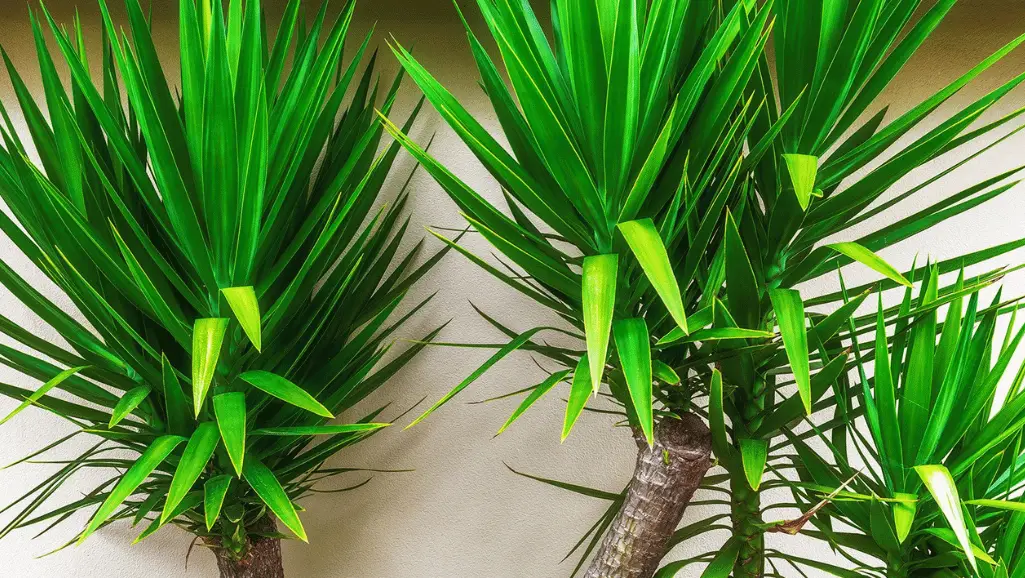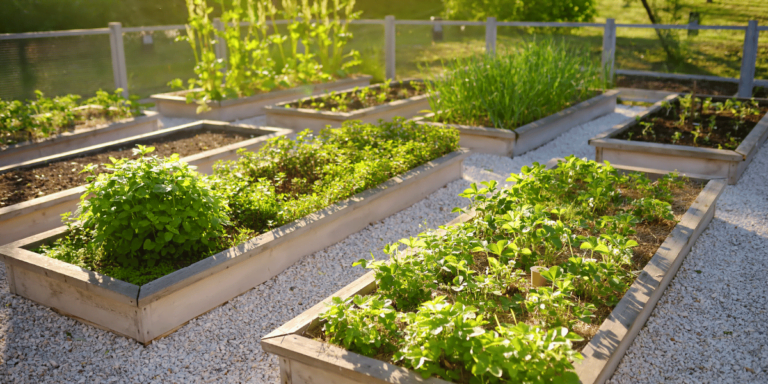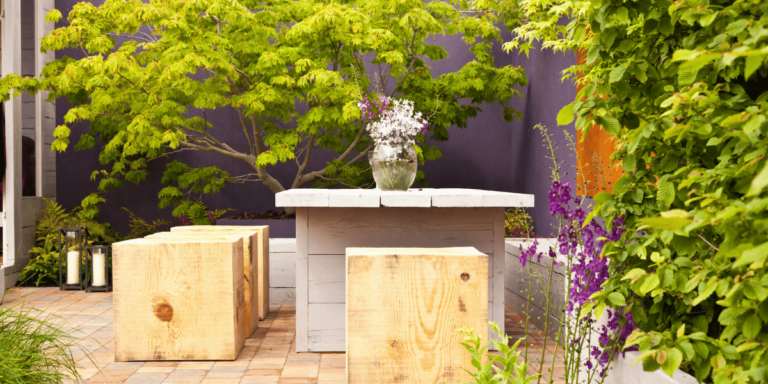Introduction
The charm of indoor plants Yucca is undeniably irresistible. Their ability to add life, purify the air, and create a serene environment in our living spaces is unmatched. Among the vast variety of indoor plants, the Yucca stands out for its striking appearance and relatively straightforward care routine. In this detailed review, we’ll navigate the various aspects of nurturing a Yucca, ensuring that this beautiful plant graces your home for years to come.
The key specifications of the Yucca plant:
| Specification | Detail |
|---|---|
| Common Names | Yucca, Spineless Yucca, Stick Yucca |
| Botanical Name | Yucca elephantipes |
| Family | Asparagaceae |
| Plant Type | Evergreen perennial |
| Mature Size | Indoors: 4 to 8 feet tall, Outdoors: Up to 30 feet tall (depending on the species) |
| Sun Exposure | Bright, indirect light for indoor Yuccas. Direct sunlight for outdoor varieties. |
| Soil Type | Well-draining potting mix. A combination of potting soil, perlite, and sand is ideal. |
| Soil pH | Slightly acidic to slightly alkaline; typically between 5.5 to 7.5 |
| Bloom Time | Late spring to summer, though indoor Yuccas might not bloom every year |
| Flower Color | White or whitish, bell-shaped flowers |
| Hardiness Zones | 7 to 11, depending on the species |
| Native Area | Arid regions of North and Central America, especially the southwestern US and Mexico |
This table provides a quick and easy reference to the Yucca plant’s main characteristics, making it simple for enthusiasts or newcomers to understand its needs and origin.
Plant Care
Yucca plants, originating from the arid regions of the Americas, have evolved with distinctive care requirements that set them apart from your typical houseplant. Their long, sword-like leaves and towering appearance can bring a touch of the desert’s resilience and beauty right into your living space. Proper care ensures not just survival but thriving growth.
Light
Bright, indirect light is the Yucca’s best friend. In their native habitats, they’re accustomed to plenty of sunlight. However, when placing your Yucca indoors, ensure it is not directly under the harsh midday sun, which could scorch its leaves. A well-lit room with filtered sunlight, perhaps through sheer curtains or a light shade, will work wonders. Rotate your Yucca occasionally to ensure even growth on all sides.
Soil
Well-draining soil is paramount for the Yucca. The roots of this plant despise being waterlogged. A mix of potting soil, sand, and perlite in equal parts is typically recommended. Ensure that the pot you’re using has adequate drainage holes to prevent any water accumulation at the bottom.
Water
While the Yucca is drought-tolerant, it doesn’t imply negligence. Water the plant regularly but allow the soil to dry out between waterings. Over-watering is a common mistake many plant owners make. Always touch the soil; if the top inch feels dry, it’s a signal for a drink. Reduce watering frequency in the winter months.
Temperature and Humidity
Yuccas prefer temperatures between 60 to 80°F (15 to 27°C). While they can handle a bit of a temperature drop, it’s best to avoid drastic fluctuations. As desert plants, they’re more forgiving of dry air but appreciate a bit of humidity. During drier months or if you have central heating, consider placing a humidifier nearby or occasionally misting the plant.
Fertilizer
These plants are not heavy feeders. Fertilizing once every two months during the growing season (spring and summer) with a balanced, water-soluble fertilizer is ample. Over-fertilizing can lead to lanky growth, so it’s best to be conservative in this regard.
Pruning
Yuccas grow tall. To manage their height or shape, or to get rid of any brown or yellowing leaves, occasional pruning is beneficial. Always use sharp and sanitized pruning shears, and cut the stems or leaves back to the desired length. This not only maintains the plant’s appearance but also promotes more vigorous growth.
Overwintering
Winter care is crucial for the Yucca. The plant prefers cooler temperatures during these months, but avoid placing it in freezing conditions. Watering should be minimized, and it’s essential to ensure that the Yucca isn’t sitting in stagnant water.
Propagating Plant
Yucca propagation is an exciting way to multiply your plant collection. The most common methods include using offsets (baby yuccas that grow at the base of a mature plant) or stem cuttings. Once you have your offset or a section of the stem, plant it in well-draining soil and maintain the usual Yucca care routine.
Quickly Declining
Although Yuccas are resilient, they’re not immune to challenges. Over-watering, poor lighting, or pest infestations can lead to a rapidly declining plant. Always keep a watchful eye on your Yucca and adjust care routines as necessary.
Types of Indoor Plants Yucca
The Yucca genus is broad and offers various species that can be grown both indoors and outdoors. Here are some of the most popular types:
- Yucca filamentosa (Adam’s Needle): Recognized by its rosettes of evergreen, tough, sword-shaped leaves and tall panicles of white or whitish flowers.
- Yucca elephantipes (Spineless Yucca/ Stick Yucca): A popular indoor variety due to its adaptability to low light. It has smooth, spineless leaves.
- Yucca aloifolia (Spanish Bayonet): Recognizable by its sharp-pointed leaves and beautiful white flowers.
- Yucca glauca (Soapweed): Often grown in outdoor gardens, it’s recognized by its narrow, blue-green leaves and bell-shaped white flowers.
Common Pests & Plant Diseases with Solution
- Pests:
- Spider Mites: These tiny pests suck out the plant’s juices, causing the leaves to look stippled.
Solution: Wipe leaves with a damp cloth. If infestation persists, use a natural insecticidal soap.
- Spider Mites: These tiny pests suck out the plant’s juices, causing the leaves to look stippled.
- Scale: These are small, round pests that attach to the plant and suck its juices.
Solution: Remove manually and apply neem oil or insecticidal soap.
- Scale: These are small, round pests that attach to the plant and suck its juices.
- Diseases:
- Root Rot: Caused by over-watering, the roots become mushy and brown.
Solution: Repot the plant in fresh, well-draining soil and ensure proper watering routine.
- Root Rot: Caused by over-watering, the roots become mushy and brown.
- Leaf Spot: This is recognized by brown or black spots on leaves.
Solution: Remove affected leaves and ensure the plant has good air circulation. Avoid overhead watering.
- Leaf Spot: This is recognized by brown or black spots on leaves.
How to Get Yucca Plant to Bloom
While Yucca plants are primarily grown for their architectural foliage, their flowers are a delightful bonus. Getting your indoor Yucca to bloom can be a challenge, but with the right conditions, it’s achievable:
- Provide Adequate Light: Ensure the plant is getting enough bright, indirect light.
- Proper Watering: Over or under-watering can stress the plant, preventing it from blooming. Establish a balanced watering routine.
- Fertilize Correctly: Using a low-nitrogen fertilizer can promote blooms.
- Patience: Yuccas might take a few years to mature and bloom. Giving them consistent care will eventually lead to flowering.
Common Problems With Yucca Plant
- Drooping or Wilting Leaves: Often a result of over-watering or poor drainage. Ensure the soil dries out between watering and the pot has good drainage.
- Yellowing Leaves: Can be due to over-watering, inadequate light, or excessive fertilizer. Adjust care routines accordingly.
- Brown Tips on Leaves: Usually caused by low humidity or excessive fertilizing. Consider misting the plant or placing it near a humidifier.
- Slow Growth: While Yuccas are not the fastest growers, too slow growth can indicate inadequate light or poor soil nutrients. Ensure it’s placed in a well-lit area and consider repotting with a nutrient-rich soil mix.
With the extended insights on Yucca varieties, addressing common problems, and ensuring it blooms, you are well-prepared to face any challenge that comes your way. Happy planting!
Reflective Thoughts
Embracing the Yucca in our indoor spaces means accepting a piece of the rugged, arid lands they come from. Their care, while distinct, teaches patience, observation, and appreciation for nature’s unique creations. With the right measures in place, your Yucca will not just survive but thrive, becoming a testimony to nature’s tenacity and beauty.
Frequently Asked Questions
Decode the magic of gardens with our guide to Landscaping Styles Frequently Asked Questions.
- Repotting every 2-3 years is ideal. This not only gives the plant fresh soil but also allows for inspection of the roots for any signs of rot or disease.
- Brown tips can be a sign of low humidity or excessive watering. Adjust your care routine accordingly, and consider snipping off the brown tips for aesthetics.
- Yes, Yucca plants contain compounds that can be toxic if ingested by pets. Always keep the plant out of reach of curious pets.
- This is often a sign that the plant is reaching out for more light. Consider relocating it to a brighter spot or rotating it regularly to ensure even growth.
With the above comprehensive guide, you’re well-equipped to take on the care of a Yucca plant. Enjoy the journey of growth, both for your plant and for yourself as a plant parent.
Recent Posts
- Modern Mural Ideas Transforming Walls into Artworks
- Thematic Table Decor Dressing Your Table for Special Occasions
- Festive Lighting Ideas Brightening Your Home for the Holidays
- Biodegradable Decor Materials Choosing Earth-Friendly Options
- Personalized Space Decor Making Your Home Uniquely Yours
- New Year’s Eve Decor Ringing in the New Year in Style
- Transforming Junk into Decor Upcycling at Its Best
- Second-Life Decor Objects Giving Old Items New Purpose
- Unique Decoration Crafting Standout Ideas for Your Home
- Environmentally Friendly Styling Decor with a Conscience













